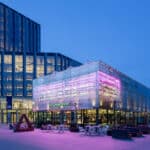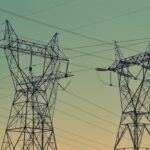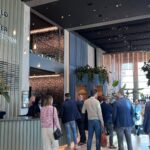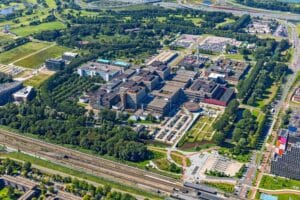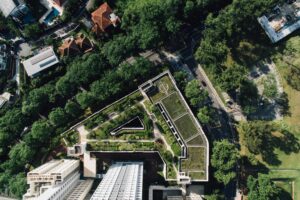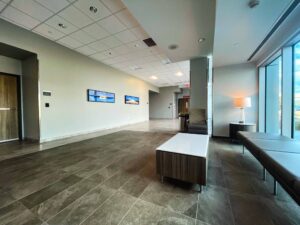
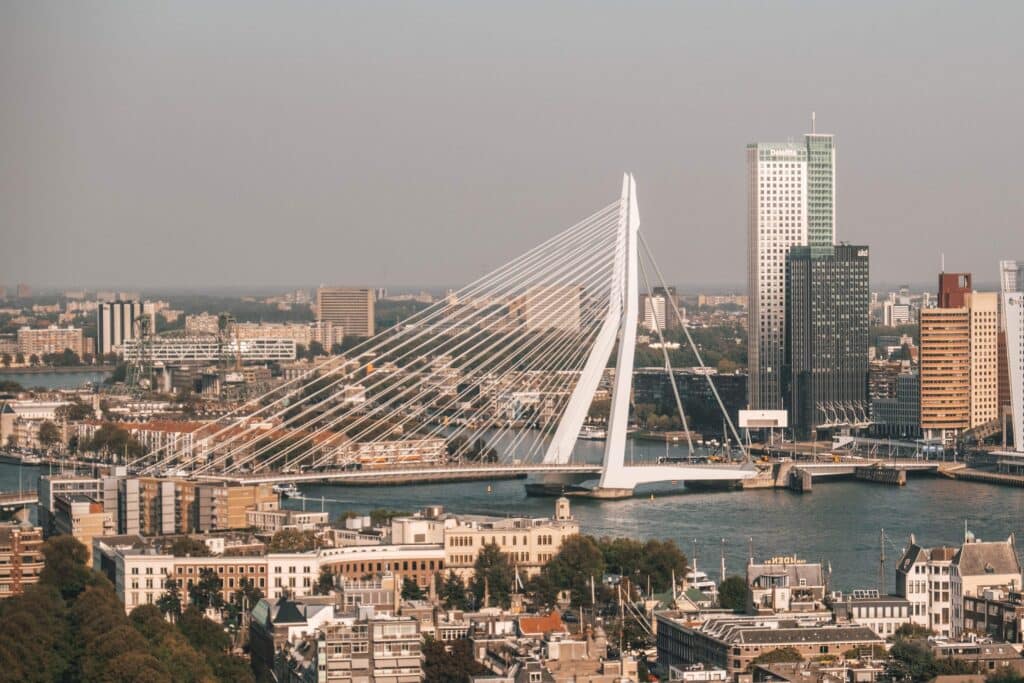
Everyone can take steps towards sustainability with NL Green
8 million homes and 1 million non-residential buildings: that is the scope of the renovation task. Addressing this challenge in a traditional manner would be impossible: we would still be at it in 2100. In order to provide the necessary acceleration, the NL Green platform focuses on making sustainability accessible and scalable. Anyone can get started with it, as illustrated by Bram Adema of CFP Green Buildings and Selina Roskam of the Dutch Ministry of the Interior and Kingdom Relations.
Text: Marvin van Kempen, Duurzaam Gebouwd
And this is absolutely essential, because there is a lot of work to do. The United Nations’ Emissions Gap Report 2023 recently highlighted this: instead of one and a half degrees Celsius of warming, we are heading towards double that. A sobering message, but we should not give up hope – we need to act now. Selina is also very much aware of this and illustrates how NL Green is making a push in the right direction: “CFP Green Buildings previously expressed its ambition to make one million non-residential buildings sustainable and give everyone the power and insights necessary to get started with sustainability themselves.”
‘Previously’ in this case means a flashback to 2012. Bram: “That was when we saw that the Energy Performance Coefficient (EPC) was the incentive for building owners to identify what steps they could take in sustainability. At the time, we were already in the process of developing tools to fulfil this desire, to gain insight into sustainability opportunities in an accessible manner.” Users already had the power to find out in what ways their houses could be improved and to take the first steps towards future viability.
We see this combination in the tools that became available: the Green Buildings Tool, WELL and BREEAM tools, to name a few. Bram adds that the challenge for sustainability in the year 2023 only starts when the conviction to start is there: “Once you have opted for a sustainability project, you are often still waiting for a consultant to become available. So it does not just cost you money, but also time to future-proof your building. Whether you are an individual or an SME, this is how it is. There are not enough installers, consultants and engineers available who will come and visit you to see how things going and to provide advice.” Selina adds: “It is impractical to have professionals go everywhere and set up a baseline. That’s why it’s so smart to let people be in control themselves. And when they finally decide on what they want to do, there are professionals who can provide support.”
Simple check
Therein lies the strength of CFP Green Buildings’ latest platform, NL Green – where anyone can take the first step towards a sustainable building. This starts with a simple check. You enter a building, which could be a residential or nonresidential building, and this is then scrutinised using available data. Those data are retrieved from various places, such as the Netherlands’ Cadastre, Land Registry and Mapping Agency, the Netherlands Enterprise Agency (RVO) and CFP Green Buildings.
If you know in what ways your house can be improved, you can make those improvements. Selina: “Gaining accessible insight is important to get as many people as possible excited about sustainability. Achieving results is more urgent than ever.” Besides the renovation task in the residential market, Selina says there are major challenges for sustainability in the non-residential market as well. “We are talking about one million non-residential buildings in need of improvement. Of course there are intrinsically motivated building owners who pick up sustainability, but there are also laws and regulations to push things in the right direction.”
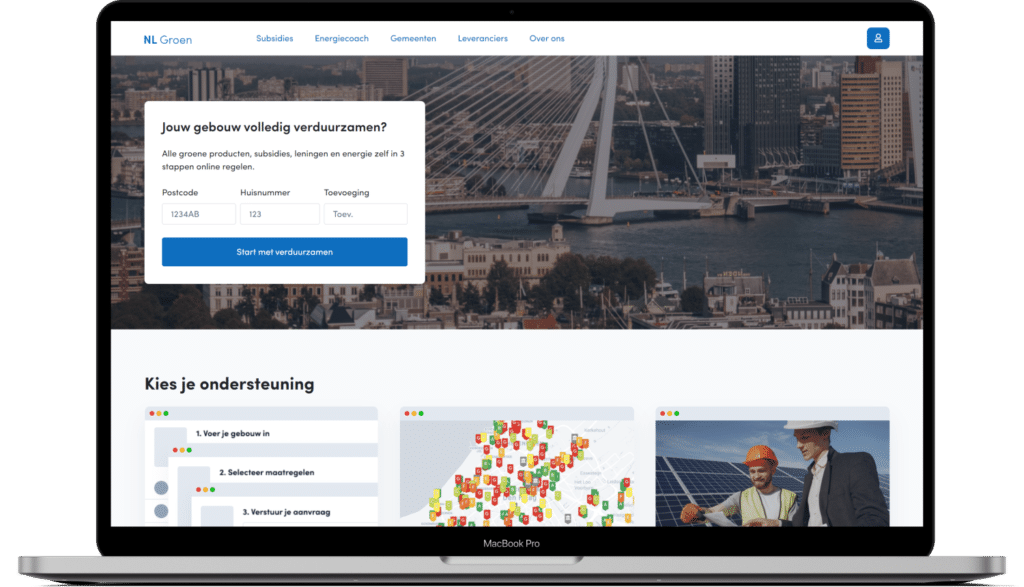
Giving substances to ambitions
For instance, the label C requirement has come into force, and as of 1 January 2024, the Corporate Sustainability Reporting Directive (CSRD) is in the pipeline. Selina continues, “The latter is mainly about being transparent in relation to what you do and creating insight. If you look at the EU Taxonomy, the key thing is to actually give substance to your sustainability ambitions. At the very least, we see that building owners want to know where they stand and then take steps to become more sustainable. A tool like NL Green can then offer a solution, because it is important to first check where you stand and then make a plan for where you want to go with buildings: highly energy efficient and fossil free.” Bram goes on to discuss the laws and regulations that are in place and those that are in the works: “You have to commit to this, and it is better to set that timeframe now. Reporting is often seen as a handicap or an increase in costs. But in this case, the information you need to report is the same you use to improve sustainability and take executive steps. This is all possible with help from NL Green.”
Integrated platform
Listening to Bram and Selina speak, it turns out that NL Green is an integrated platform: to save energy, make your business case solid and satisfy reporting needs. Bram continues to explain the tool’s value: “The aim is to make optimum use of every available hour of consultants, for improving sustainability and execution. The purpose is not to help parties consider whether sustainability is necessary, because that slows down the process. The tool is a decision support system – a system that helps users make a considered decision. A consultant is involved with implementation, starting after the sustainability decision. That way, we achieve the best results.”
Back to using the tool. Once you have gained insight, it is a matter of putting together a sustainable application. The choices for the application are already pretty extensive. If we were to scrutinise a random house built in 2012 in ‘s-Hertogenbosch, for example, we would be presented with a number of interesting options. In this city, the municipality promotes sustainability, and we get an overview of national and regional subsidies. Should the need arise, we can apply for subsidy advice.
Savings and carbon impact
The list of sustainable measures ranges from solar panels to electric or a hybrid heat pump and from floor to roof insulation: it is not only at an architectural level that steps can be taken to reduce heat demand using the Trias Energetica strategy. There are also building engineering measures available that allow gains to be made in several areas.
You can influence your choices by choosing to sort by savings or the reduction of harmful greenhouse gases, among other things: if you go for carbon impact, you can see at a glance which measures achieve the fastest results. If you are mainly looking for annual financial savings, NL Green also brings that into the picture. Once you have made your choice, you will be shown the financial benefit over the next 15 years, which cashback offers you can take advantage of and the maximum subsidy to make your business case positive.
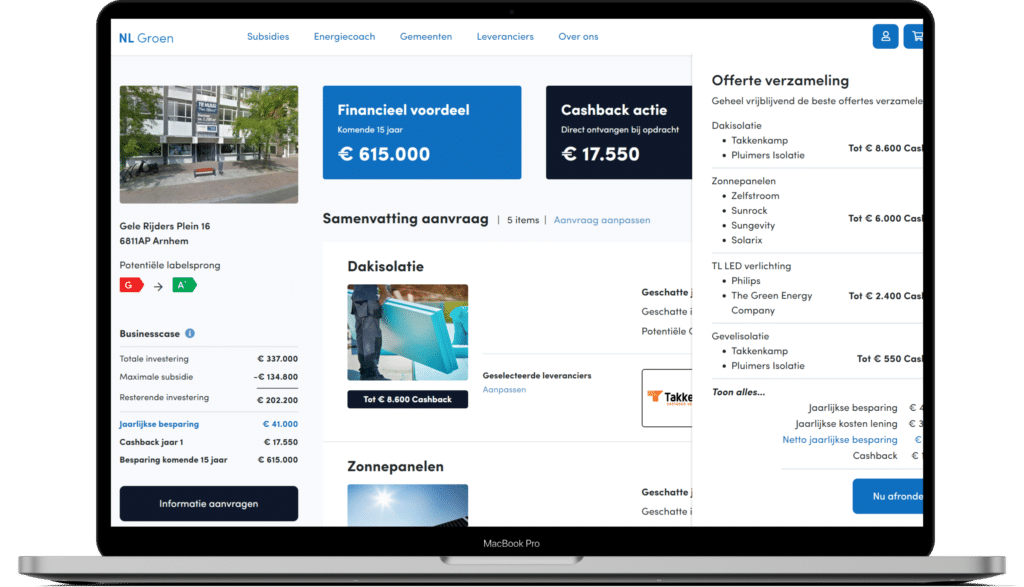
New standard
If all goes well, this will fuel the fire to start working on sustainability – for both private individuals and non-residential building owners. According to Selina, it is essential for the latter group not to wait too long, because a minimum energy performance limit for non-residential buildings is in the pipeline. “We sent a letter to the House of Representatives describing the limit corresponding to 25% of the worst buildings by 2030. This may seem distant, but it is important to realise that you need to take action now in order to meet the standards by that time.”
That, she says, is why it is so important to gain an understanding of your property and then plot a roadmap. “Plot it over time, so you know, for example, what actions you will take in 2025.” She expects NL Green to quickly gain fame, resulting in many building owners getting started: “I welcome frontrunners like CFP Green Buildings, who have embarked on innovation based on intrinsic motivation. It’s great that a tool like NL Green exists, so that we can work together to really accelerate things.”
